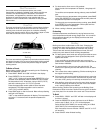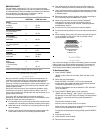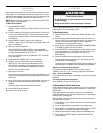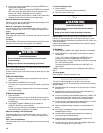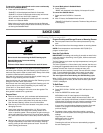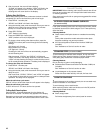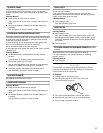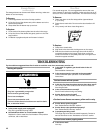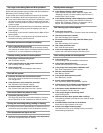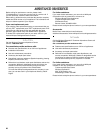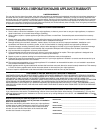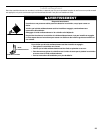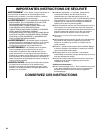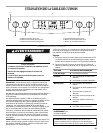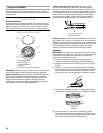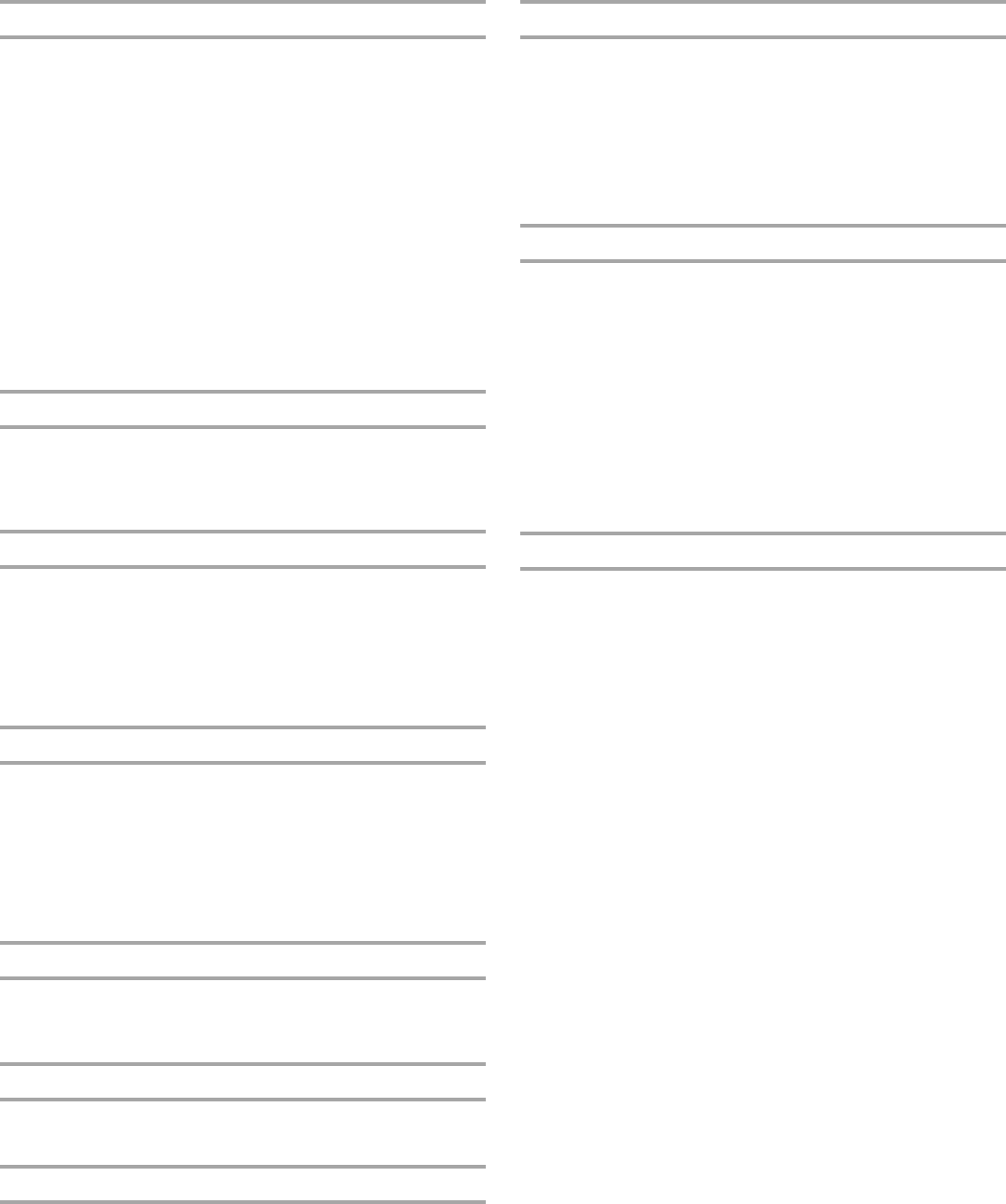
19
Gas range noises during Bake and Broil operations
Noises that may be heard during the Bake and Broil operations:
Whooshing, Poof, Clicking, Snaps, Pop
These sounds are normal operational noises that can be heard
each time the Bake or Broil burners ignite during the cycle.
■ A pop can be heard when the gas valve is opening or cycling
on and will make a single pop when it snaps open from the
solenoid. It sounds similar to a suction cup being pulled off of
a piece of glass.
■ The igniters will click several times until the flame is detected.
These are short clicking sounds like tapping a nail onto a
piece of glass.
■ A whooshing or poof sound is heard when the Bake or Broil
burner ignites.
■ On some models, a clicking sound can be heard when the
convection fan relay cycles on and off.
Excessive heat around cookware on cooktop
■ Is the cookware the proper size?
Use cookware about the same size as the surface cooking
area, element or surface burner. Cookware should not extend
more than ½" (1.3 cm) outside the cooking area.
Cooktop cooking results not what expected
■ Is the proper cookware being used?
See “Cookware” section.
■ Is the control knob set to the proper heat level?
See “Cooktop Controls” section.
■ Is the range level?
Level the range. See the Installation Instructions.
Oven will not operate
■ Is this the first time the oven has been used?
Turn on any one of the surface burner knobs to release air
from the gas lines.
■ Is the electronic oven control set correctly?
See “Electronic Oven Control” section.
■ On some models, is the Control Lock set?
See “Control Panel and Oven Door Lock” section.
Oven burner flames are yellow or noisy
■ Is propane gas being used?
The range may have been converted improperly. Contact a
service technician or see “Assistance or Service” section.
Cooling fan runs during baking, broiling or cleaning
■ It is normal for the fan to automatically run while the oven is in
use and for some time after to cool the electronic control.
Oven temperature too high or too low
■ Does the oven temperature calibration need adjustment?
See “Oven Temperature Control” section.
Display shows messages
■ Is the display showing a flashing time?
There has been a power failure. Clear the display. See
“Display(s)” section. On some models, reset the clock, if
needed. See “Clock” section.
■ Is the display showing a letter followed by a number?
Depending on your model, press CANCEL to clear the
display. See “Display(s)” section. If it reappears, call for
service. See “Assistance or Service” section.
Self-Cleaning cycle will not operate
■ Is the oven door open?
The display will show “door.” Close the oven door all the way.
■ Has the function been entered?
See “Self-Cleaning Cycle” section.
■ On some models, has a delay start Self-Clean cycle
been set?
See “Self-Cleaning Cycle” section.
■ Has a delay start been set?
See “Cook & Hold” section.
■ Is the oven temperature above 400°F (205°C)?
Let the oven cool before using the self-clean cycle.
Oven cooking results not what expected
■ Is the range level?
Level the range. See the Installation Instructions.
■ Is the proper temperature set?
Double-check the recipe in a reliable cookbook.
■ Is the proper oven temperature calibration set?
See “Oven Temperature Control” section.
■ Was the oven preheated?
See “Baking” section.
■ Is the proper bakeware being used?
See “Bakeware” section.
■ Are the racks positioned properly?
See “Positioning Racks and Bakeware” section.
■ Is there proper air circulation around bakeware?
See “Positioning Racks and Bakeware” section.
■ Is the batter evenly distributed in the pan?
Check that batter is level in the pan.
■ Is the proper length of time being used?
Adjust cooking time.
■ Has the oven door been opened while cooking?
Oven peeking releases oven heat and can result in longer
cooking times.
■ Are baked items too brown on the bottom?
Move rack to higher position in the oven.
■ Are pie crust edges browning early?
Use aluminum foil to cover the edge of the crust and/or
reduce baking temperature.



